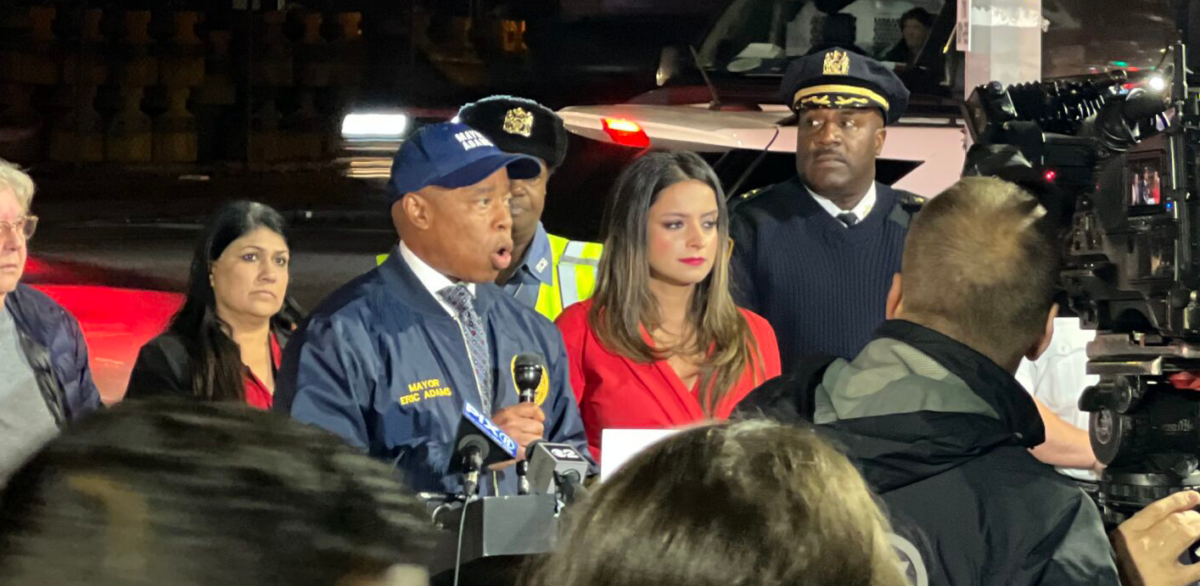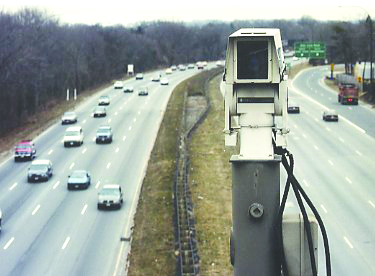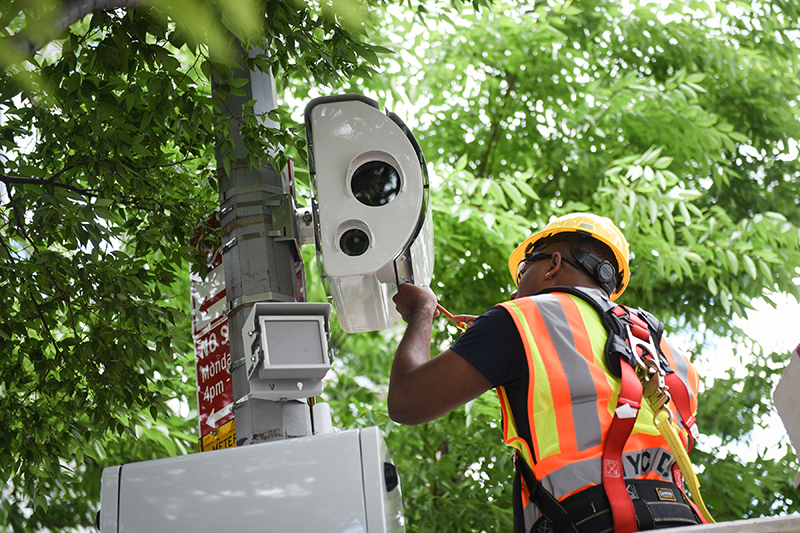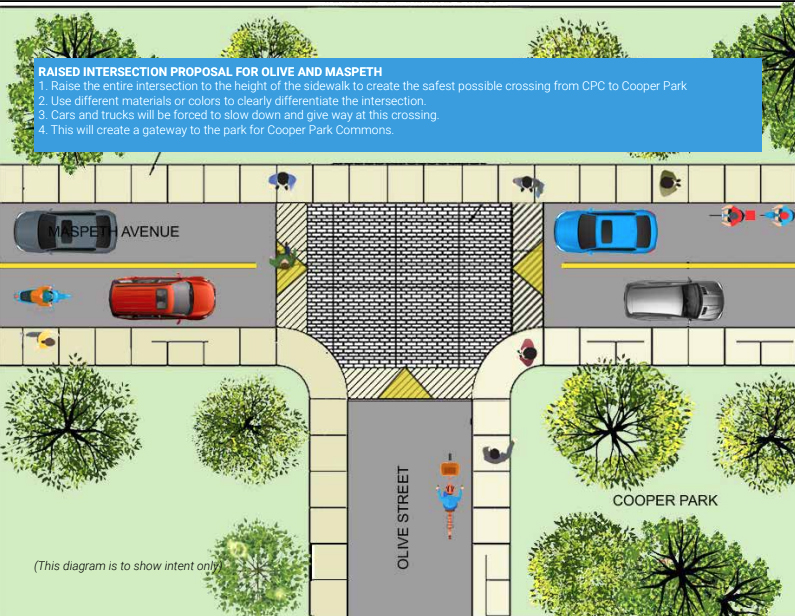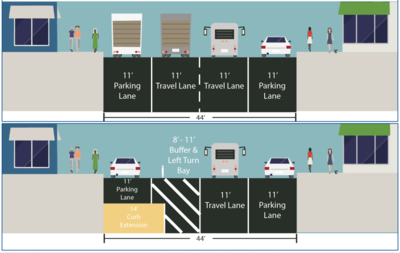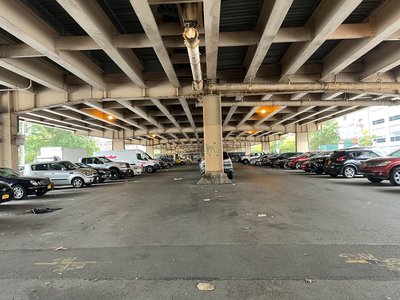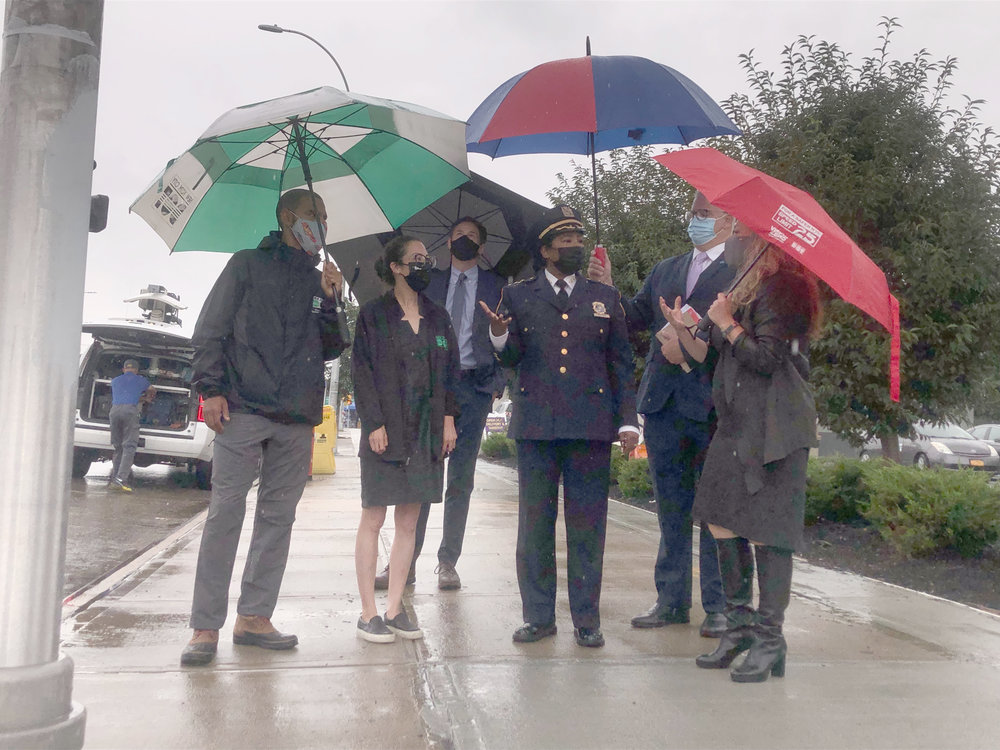Remembering Krystyna Naprawa
By Celia Bernhardt
cbernhardt@queensledger.com
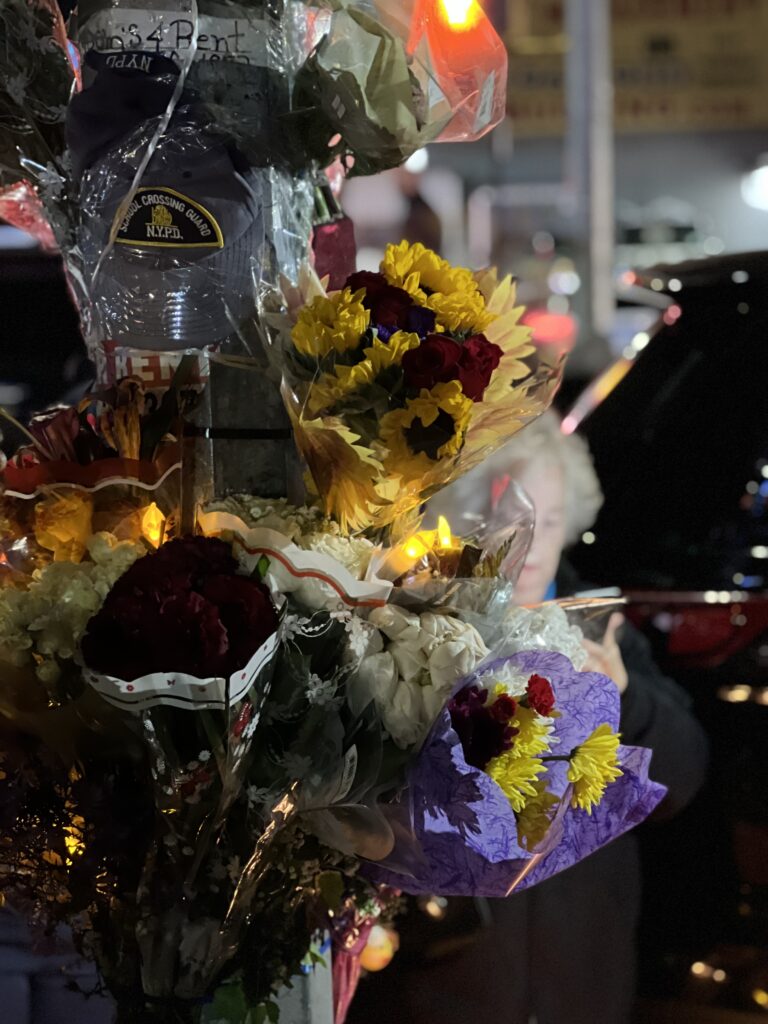
Photo credit: Celia Berbhardt
A candlelight vigil was held on Monday night for Krystyna Naprawa, a beloved NYPD school crossing guard who was killed on the job after being struck by a dump truck in Woodhaven.
The tragedy took place on Friday morning at the corner of Atlantic Avenue and Woodhaven Boulevard. The vigil was held at a gas location at the same intersection.
39-year-old Hector Yepes was operating the truck, and has been arrested and charged with failure to yield to a pedestrian. Naprawa was 63 years old.
Community members, friends, family, and colleagues gathered at the gas station, holding electric candles. The sounds of cars and trucks on the busy roads surrounding the event was ever present. Mayor Adams was in attendance at the vigil, along with numerous police officers and local representatives.
“My heart goes out to the family. Words cannot really take away the pain,” Adams said to the crowd. “But our presence can do a lot to give the assurance that we celebrate a life that was committed…a life that was well-respected.”
A staffer representing Congresswoman Nydia Velázquez also spoke to the crowd.
“She’s been a community fixture since she began her job in 2010, making sure students were safe here at this intersection,” the staffer said. “For 13 years, young students and their families, including myself, crossed this intersection to get to P.S. 210, CTEA, or any other school. And they were safe because of Ms. Naprawa. For that, the Woodhaven and the Ozone Park community will forever be grateful.”
“The Congresswoman knows and she believes that we have to do more to secure the safety of pedestrians at this intersection,” he continued. “So she’s personally reaching out to the Department of Transportation.”
Two of Naprawa’s colleagues, Shahana Chowdhury and Jahanara Islam, remember her as a very kind person. They are shaken by her passing.
“Now that Krystyna passed away, I’m really scared too,” Chowdhury said. “Sometimes I say I’m going to quit the job. I don’t want to live my life like this…when I think like this, it’s very scary. Then I feel crazy, so sometimes I try to forget.”
“She was so sweet,” Islam said.
After the speeches and a moment of silence, the crowd crossed the street, with the help of multiple NYPD offices and crossing guards, to lay down flowers and candles on the corner.

